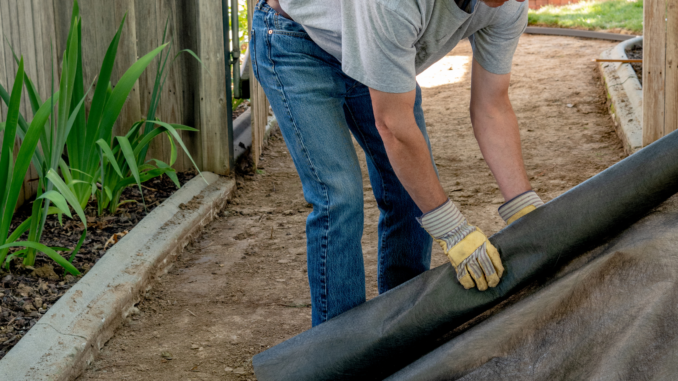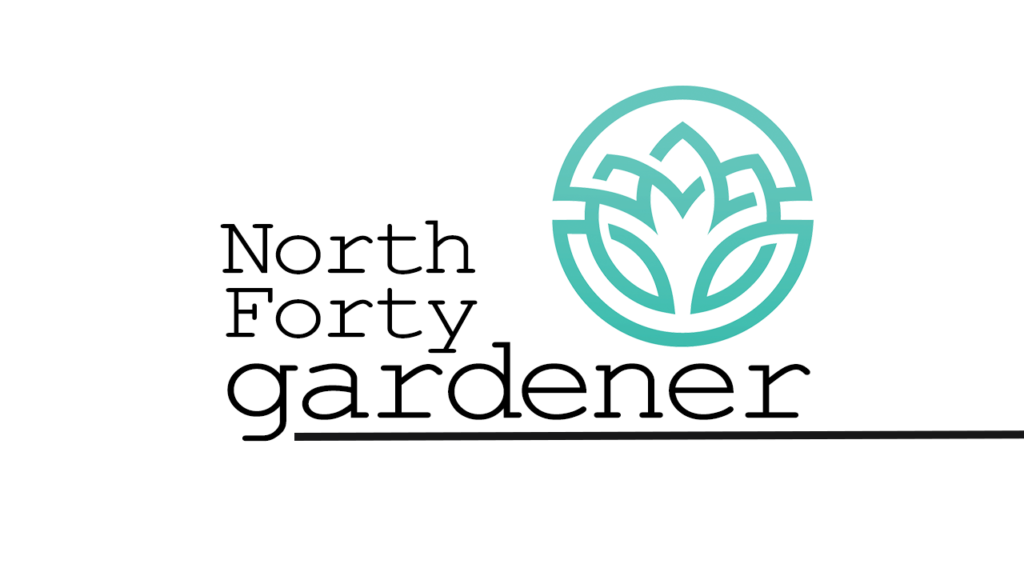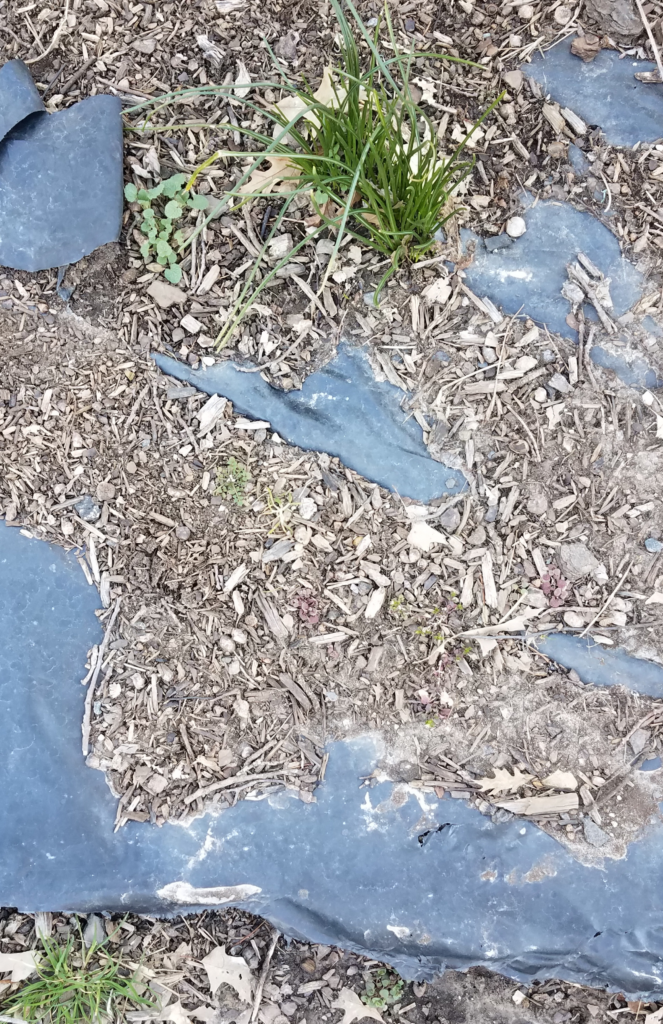

Sherry Fuller, Curator, Gardens on Spring Creek
Do you have landscape fabric around plants in your yard? Do you like it?
Landscape fabric is a textile that is usually woven, often with a fuzzy side and often black or gray. It comes in bolts that are usually three to six feet wide. Its primary use is around plants, under mulch, to discourage weeds. But it has some definite advantages and problems.
PROS
- It does keep many weeds from growing.
- It helps to hold moisture in the soil by reducing evaporation.
- Fabric keeps mulch, especially rock mulch, from sinking into the soil over time.
CONS
- Some weeds can still work their way through the fabric and once that happens, they are even more difficult to remove. With time, blown-in dust and plant debris create a thin layer of soil over the fabric. Weeds will germinate in this and their roots will work through the fabric.
- Fabric keeps earthworms and other useful garden invertebrates from breaking down wood mulch, fallen leaves, and other organic debris and moving these down into the soil, enriching it for plants.
- It is difficult for plants to spread beyond the original hole that was cut in the fabric for them. Some tough plants will just grow through the fabric, as weeds sometimes do, but they often don’t thrive this way.
- Plants can’t reseed easily with landscape fabric. Many gardeners enjoy plants that do their own thing – sowing new starts here and there, such as California poppy, blue flax, and cosmos. I personally love these free plants, even though I sometimes pull them out when they get too rambunctious.

Fabric doesn’t work well in beds with annuals that are replaced every year. It can be useful in vegetable gardens to help hold moisture and warm the soil (in this case, don’t cover it with mulch), but I generally just use smaller pieces patchworked around for veggies since layouts change every year.
I think the bottom line depends on what is growing in the area in question and what style gardener you are. Fabric is very useful in beds that contain only shrubs and small trees. Lay it, cover it with mulch, and weeds are not the constant concern they might be otherwise. Likewise, if you enjoy a neat garden with some space between your plants and being able to see larger patches of mulch makes you happy, fabric is probably going to work well for you.
Conversely, if you like a little wilder garden, with plants competing for space and volunteers popping up or if you tend to move plants around or add plants every year, you will probably not be a fan of landscape fabric.
Some final thoughts on the use of landscape fabric:
- Generally, better quality fabric is worth the price.
- Removing fabric that isn’t working well is a huge job.
- Be sure to generously overlap seams of the fabric and pin it down to keep corners from working their way up.
- Cut round holes or make X-shaped cuts, and fold back the flaps for plants.
- Make the holes a bit larger than the plant needs right now and consider cutting these larger every few years as plants grow.
Sherry Fuller is a horticulturist at The Gardens on Spring Creek and can be reached at [email protected].
Support Northern Colorado Journalism
Show your support for North Forty News by helping us produce more content. It's a kind and simple gesture that will help us continue to bring more content to you.
BONUS - Donors get a link in their receipt to sign up for our once-per-week instant text messaging alert. Get your e-copy of North Forty News the moment it is released!
Click to Donate
